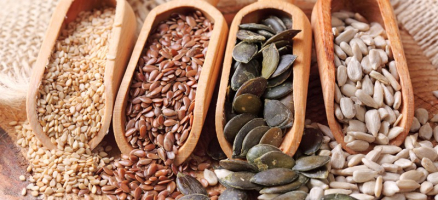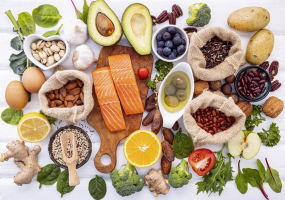Top 14 Best Purple Foods You Should Be Eating
Foods with a natural purple color provide a wide range of health benefits due to their high concentration of powerful plant compounds. Though purple is most ... read more...commonly associated with fruits, purple-colored foods include vegetables and grains. Here are some purple foods that are as healthy and delicious as they are attractive.
-
The purple fruit blackberries are one of the most well-known. These delicious berries are high in nutrients and anthocyanin pigments. Anthocyanins are a kind of polyphenol compound that gives purple, blue, or red foods their color. The other fruits, vegetables, and grains on this list have substantial concentrations of them.
Anthocyanins protect your cells from damage and decrease inflammation, which can lead to negative health results. Anthocyanins improve your health in a number of ways. Blackberries, for example, are high in anthocyanins, which may protect against diabetes, some cancers, and heart disease. Blackberries are also high in fiber and minerals including vitamin C, folate, magnesium, potassium, and manganese, as well as strong polyphenol antioxidants. Blackberries are a highly nutritious choice for a tasty, sweet dessert because of all of these nutrients.
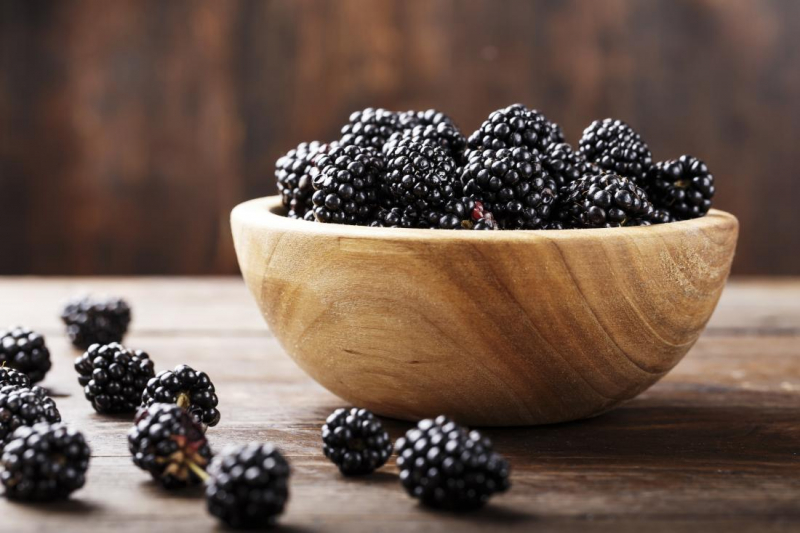
Blackberries 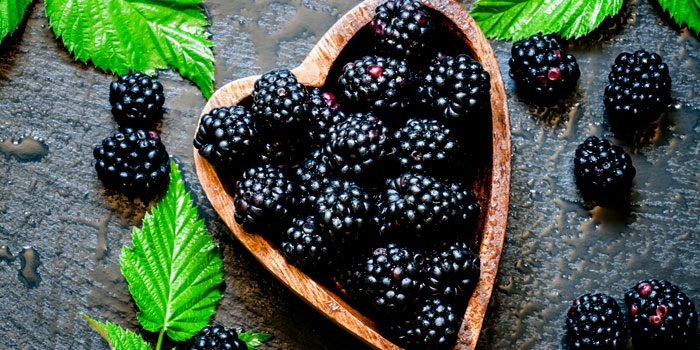
Blackberries -
Also called forbidden or purple rice, black rice is a type of rice that belongs to the Oryza sativa L. species. It is an unique rice variety that turns a deep purple color when cooked, earning it the nickname "forbidden rice". Black rice was believed to be so unique and nutritious in ancient China that it was forbidden to everyone but royalty. Black rice is now used in a variety of cuisines across the world due to its mild, nutty flavor, chewy texture, and numerous nutritional benefits.
Unlike other rice varieties, forbidden rice contains a rich source of anthocyanins, which may have cancer-fighting properties. In test-tube and animal experiments, black rice anthocyanins have been found to prevent cancer cell growth and induce cancer cell death. This bright grain may be used in a variety of recipes, including soups, stir-fries, and pilafs, as a colorful substitute for white or brown rice.
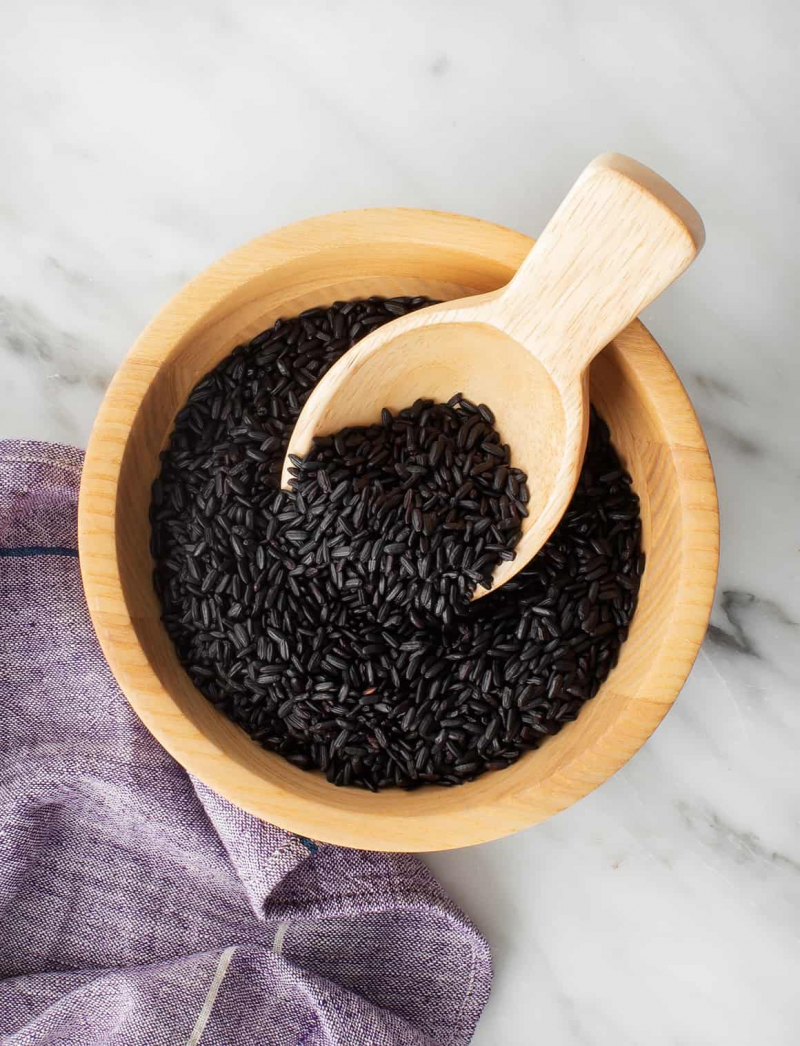
Forbidden rice 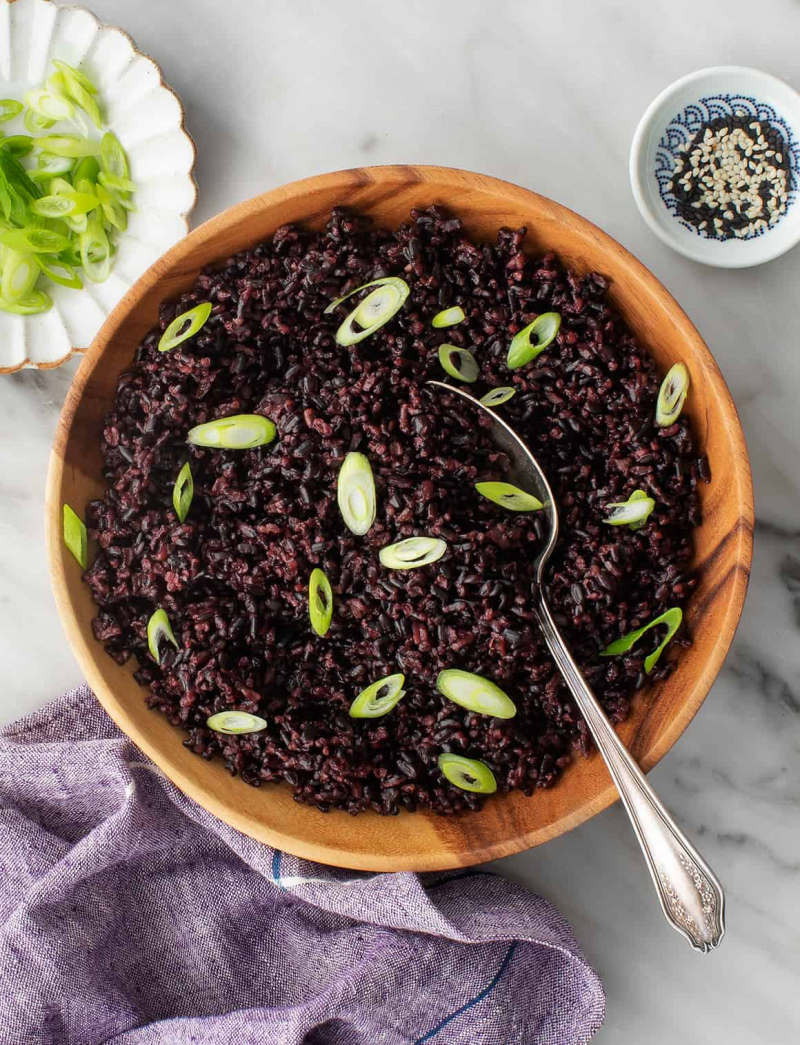
Forbidden rice -
Sweet potatoes have received the name "superfood" due to their high nutritional content. According to research, they may help with: cancer, diabetes, heart disease, macular degeneration and obesity.
Sweet potatoes are abundant in vitamin C, provitamin A, potassium, and B vitamins, among other vitamins and minerals. Purple sweet potatoes have the added benefit of being high in antioxidants called anthocyanins. Purple sweet potatoes may have anti-inflammatory properties and may even protect against obesity and some types of cancer, including colon cancer, according to test-tube and animal research. One sweet potato provides 400% of your daily vitamin A requirements. This benefits both your eyes and your immune system, which is your body's defense against germs. It's also good for your reproductive system as well as organs such as the heart and kidneys.
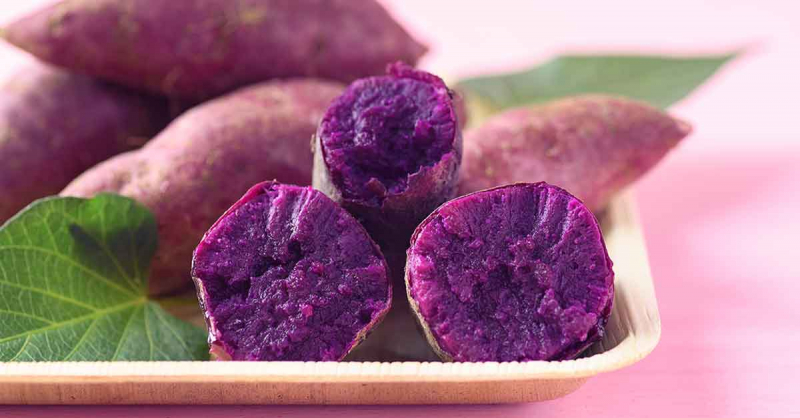
Purple sweet potatoes 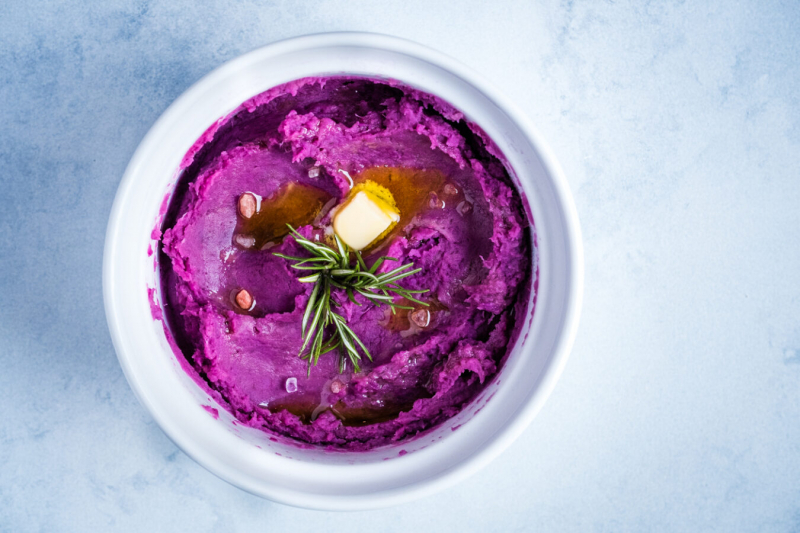
Purple sweet potatoes -
For thousands of years, eggplant has been used in traditional medicine. White eggplant was used to treat diabetes and the roots were used to treat asthma in the ancient Indian system of ayurvedic medicine.
While eggplant isn't the healthiest vegetable, it does provide a good amount of potassium and fiber. It's also a guilt-free food, with only 25 calories and less than 1 gram of fat per serving if you don't soak it in oil. Purple-skinned eggplants are one of the most common types of eggplant. Although not as nutrient-dense as some of the other foods on this list, eggplants are high in antioxidants and manganese, a mineral that is important for bone health and metabolism. The anthocyanin nasunin, which has been proven to have anti-inflammatory and heart-protective properties in animal and test-tube studies, is highly abundant in the peel of purple eggplants.
Eggplant 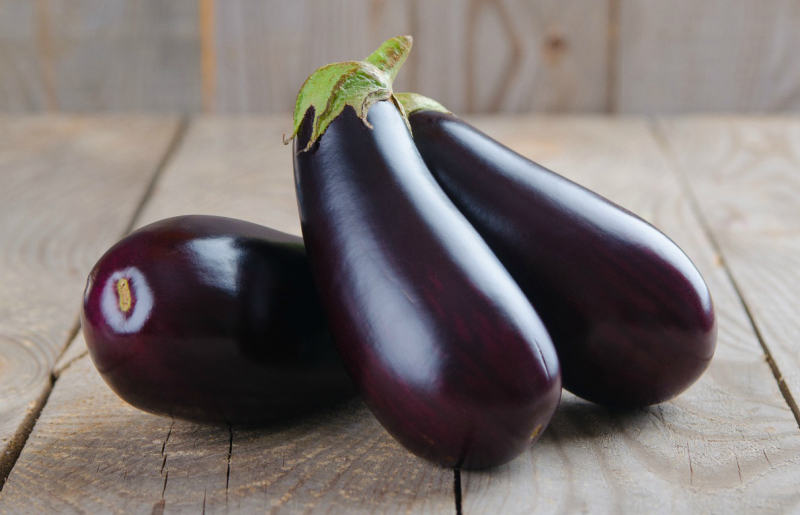
Eggplant -
Purple cauliflower has nutrients that are similar to those found in white cauliflower. Purple cauliflower, on the other hand, has a number of nutritional benefits. The purple color comes from anthocyanins, a type of flavonoid compound that may help regulate blood cholesterol and sugar levels, as well as minimize cancer risk.
Purple cauliflower provides color to any dish while also offering anti-inflammatory properties and possibly protecting against cancers such as colorectal cancer. Purple cauliflower also includes glucoraphanin, a compound that is also found in common green broccoli. Glucoraphanin can be converted to compounds with anticancer properties in your body. Increasing your intake of cruciferous vegetables like cauliflower may minimize your risk of heart disease and boost your overall longevity.
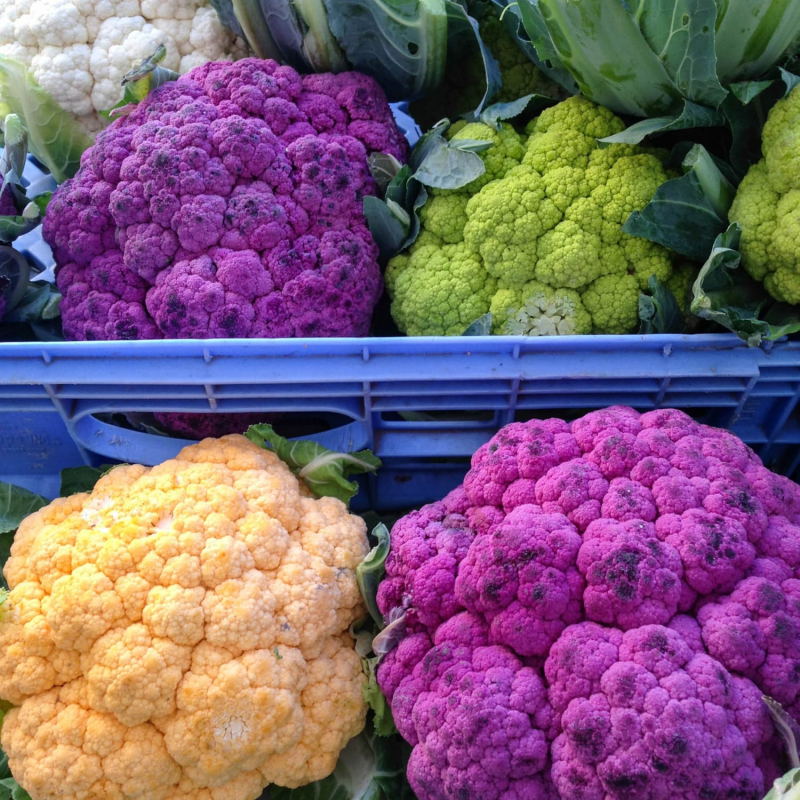
Purple cauliflower 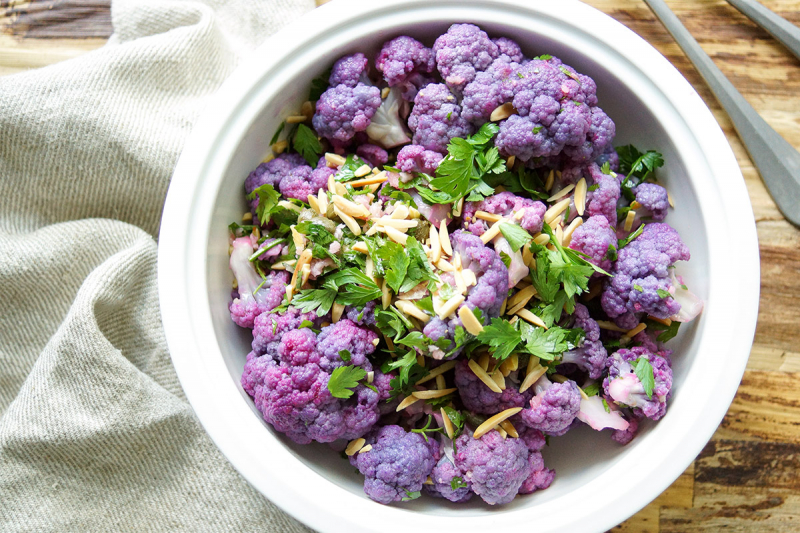
Purple cauliflower -
Purple carrots are high in vitamins, minerals, and powerful plant compounds that can help your health in a number of ways. Purple carrots are crunchy, sweet-tasting vegetables that are high in polyphenol antioxidants such anthocyanins, cinnamic acid, and chlorogenic acid. People who eat polyphenol-rich diets had lower rates of heart disease, obesity, and diabetes than those who eat diets low in these important antioxidants, according to research.
Though all carrots are nutritious and healthful, purple carrots contain potent antioxidants known as anthocyanins that have significant health benefits. Purple carrots may help you lose weight, enhance your heart health, and lower inflammation and the risk of some cancers. Purple carrots have more polyphenol antioxidants than other carrot varieties, therefore including them in your diet is a good idea.
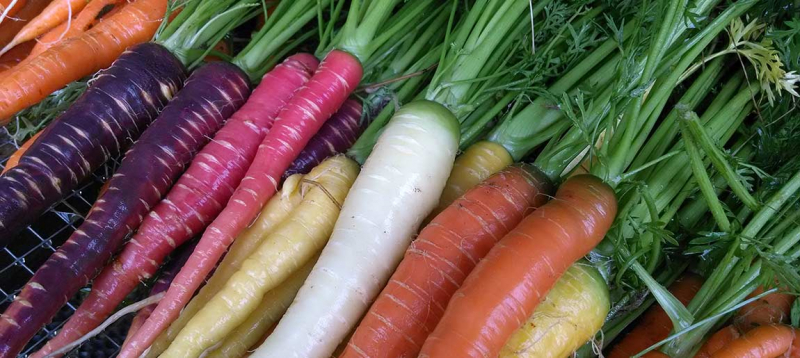
Purple carrots 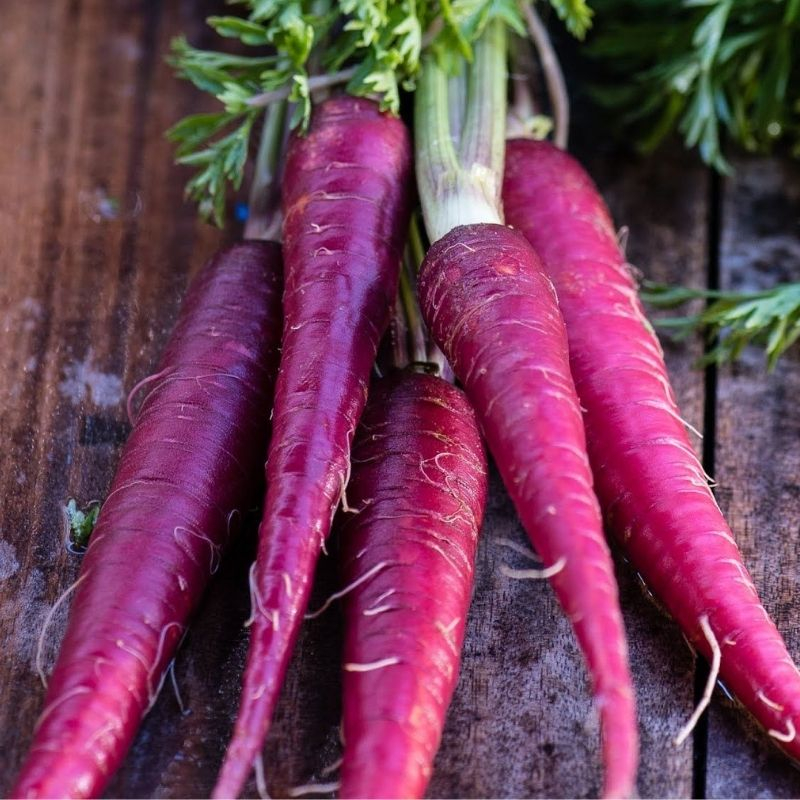
Purple carrots -
Kale, especially the purple-tinged Redbor variety, is a nutritious powerhouse. Redbor kale extract was discovered to contain 47 strong plant compounds in one research, including kaempferol, quercetin, and p-coumaric acid.
Redbor kale is frequently used as a decorative plant in gardens and planters due to its distinctive color and interesting texture. However, it is edible and quite nourishing. It may be used in a variety of recipes in the same way as other leafy greens. Kale is high in vitamins and minerals (vitamin A, C, K, manganese, fiber, calcium, iron, and potassium), as well as phytochemicals, which have a variety of health benefits spanning from cholesterol reduction to preventing cancer. It is abundant in vitamin A, which is beneficial to both vision and skin. Vitamin C is beneficial to the immune system, metabolism, and hydration. And vitamin K protects against a variety of cancers. Lastly, kale is high in iron, which is good for liver function, and has more iron per calorie than beef!
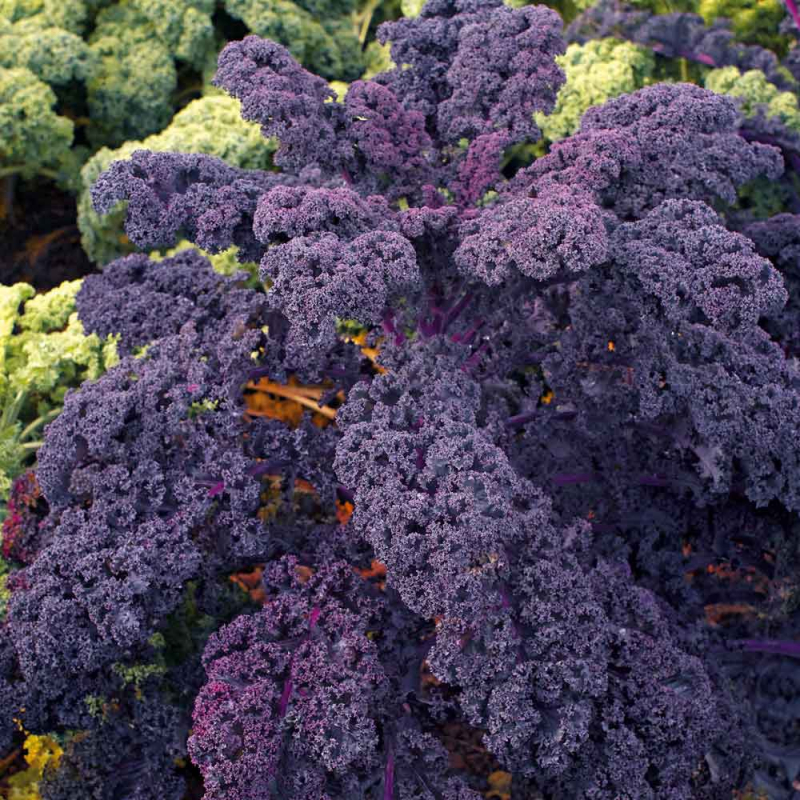
Redbor kale 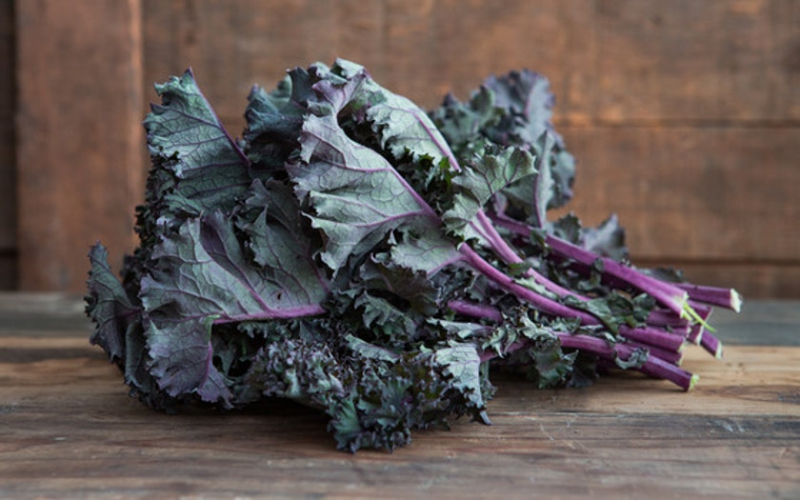
Redbor kale -
The tropical vine Passiflora edulis is cultivated for its ability to produce delicious passion fruit. A yellow or purple skin covers sweet, soft flesh with crunchy seeds in ripe passion fruits.
Piceatannol, an unique polyphenol antioxidant found in passion fruit, has been demonstrated to have several health-promoting properties and may be especially good for skin health. Piceatannol extracted from passion fruit, for example, was proven to protect skin cells from UV damage in a test tube study. Furthermore, taking 5 mg of piceatannol for 8 weeks increased skin moisture in 32 women with dry skin, according to a research. Piceatannol, the same active compound, has also been found to help diabetics lower blood glucose levels (in animal studies). Passion fruits are naturally anti-inflammatory and strong in antioxidants, and when combined with piceatannol, they may have anticancer properties against diseases like leukemia, breast cancer, and prostate cancer.
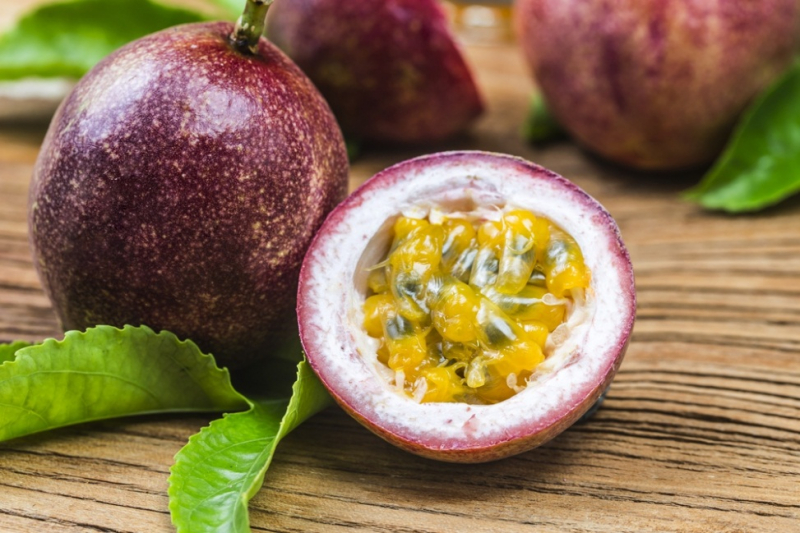
Passion fruit 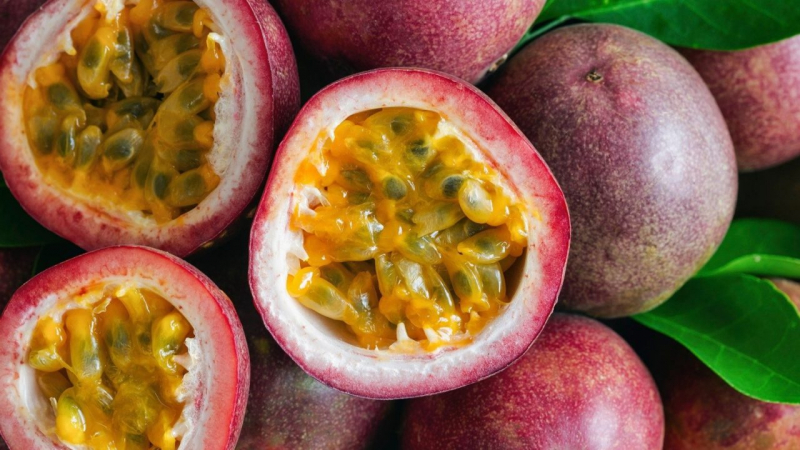
Passion fruit -
Mangosteen is a purple, small fruit that grows in Southeast Asia. News reports and internet influencers have claimed that the fruit offers a variety of health benefits in recent years. It's been known as a "superfood".
It has a tough outer skin and delicious, white, juicy flesh on the inside. It has been characterized as having a lychee, peach, strawberry, and pineapple flavor. Mangosteen has many benefits. It contains a range of compounds and substances that are good for human health. Mangosteens are high in fiber and folate, a B vitamin that is required for a variety of body processes, including the production of DNA and red blood cells. These unique fruits also contain xanthone antioxidants, which have been demonstrated in certain studies to have anti-inflammatory, neuroprotective, and anticancer properties. Mangosteen, like other fruits, is low in fat, sodium, and calories, which helps people maintain a healthy weight. They're also cholesterol-free, which can help prevent chronic diseases like heart disease and type 2 diabetes.
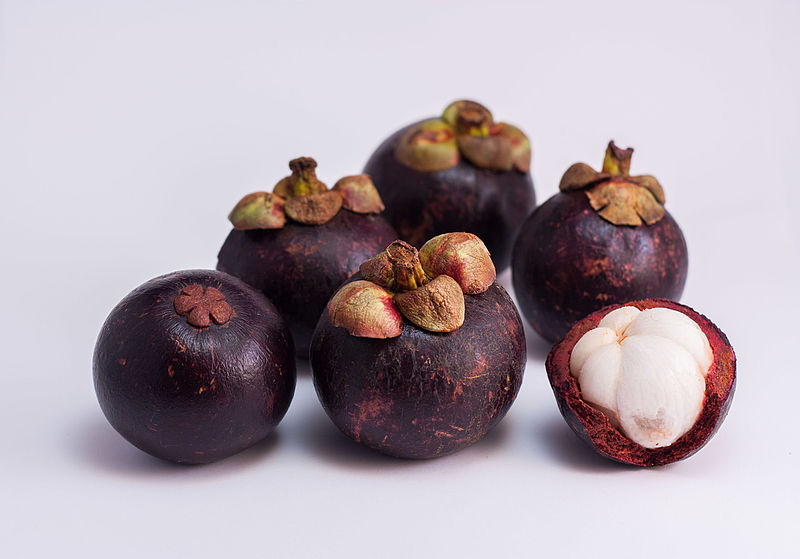
Purple mangosteen 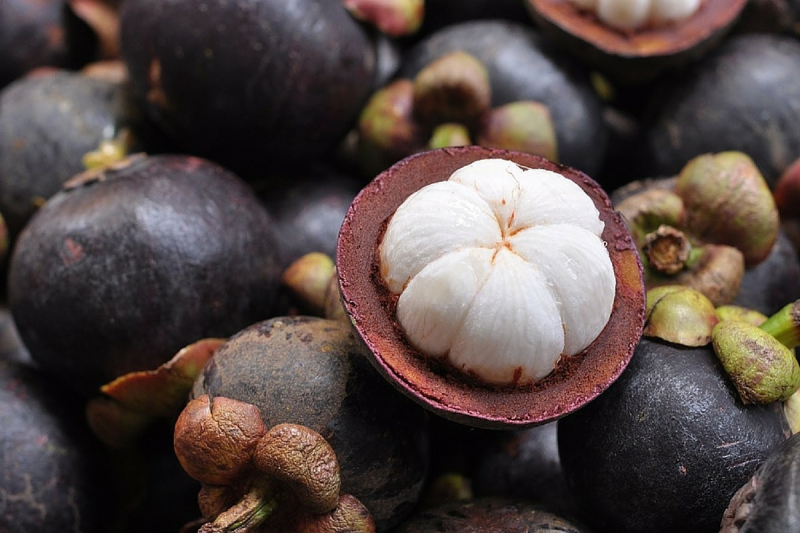
Purple mangosteen -
Although asparagus is most commonly associated with the color green, it may also be found in white and purple varieties. Purple asparagus provides a wealth of vitamins, minerals, and strong plant compounds, as well as adds visual appeal to recipes.
Some micronutrients found in asparagus include iron, zinc, and riboflavin in small amounts. It's a good source of vitamin K, an important nutrient for blood clotting and bone health. Furthermore, asparagus is high in folate, a vitamin that is essential for a healthy pregnancy as well as a range of body processes such as cell growth and DNA formation. Purple asparagus also has the greatest content of rutin, a polyphenol plant pigment that may have potent anti-cancer and heart-protective properties.
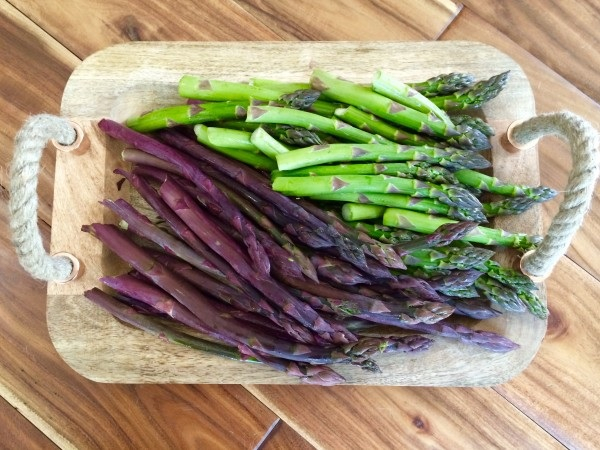
Purple asparagus 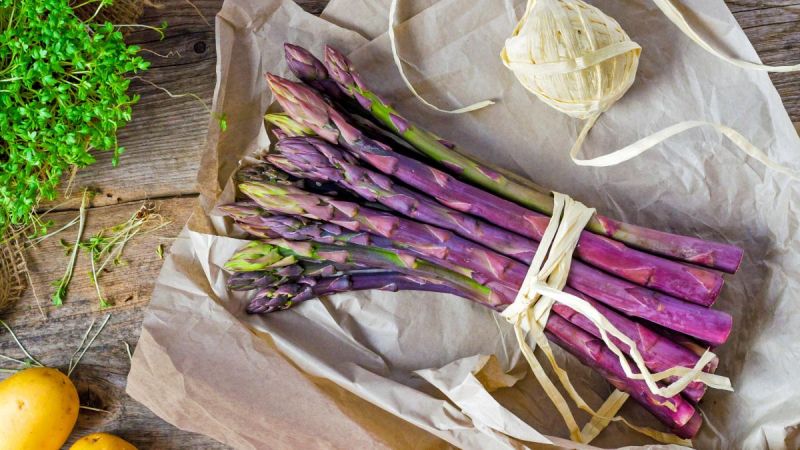
Purple asparagus -
Acai berries are small, deep purple fruits that have gained popularity in the health sector due to their high antioxidant content, particularly anthocyanins. Acai berries may be used in a range of recipes, including acai bowls, a Brazilian dish made from frozen, blended acai berries.
For medicinal purposes, they are also made into juices, powders, and concentrated supplements. These delicious purple berries may improve your health in a variety of ways. Acai berries offer several potential health benefits due to their high antioxidant content. They're high in potent plant compounds that function as antioxidants and may help your brain, heart, and overall health. They also include beneficial fats and fiber, making them nutritious food. They may help lower high cholesterol, blood sugar levels, and inflammation by increasing blood antioxidant content.
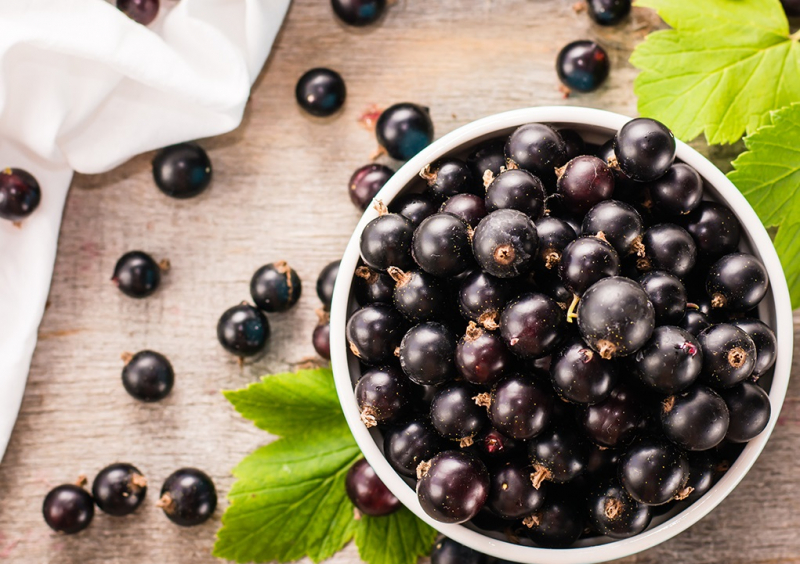
Acai berries 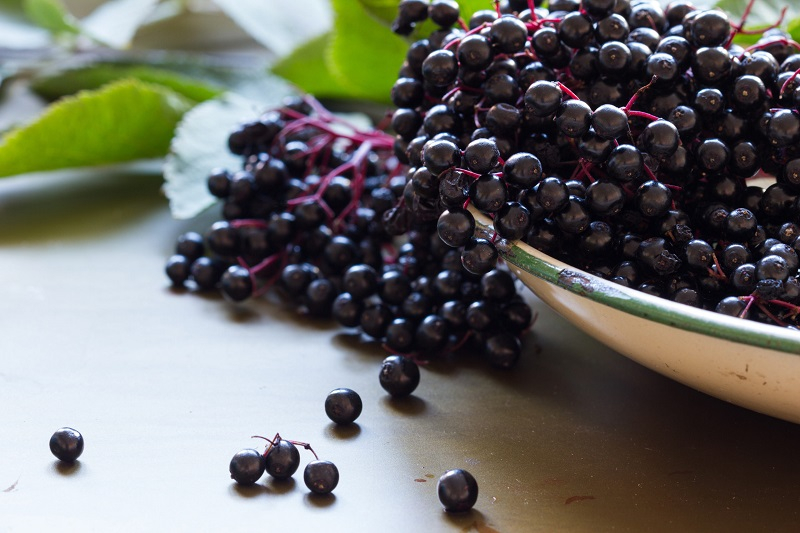
Acai berries -
Chrysophyllum cainito, or purple star apple, is a tree that produces round purple fruits when ripe. When cut, the fruits feature a radiating star pattern and tasty flesh that secretes a milky juice.
Throughout history, people have used the fruit, bark, and leaves of the star apple tree to treat a range of diseases, including coughs, pain, and diabetes. Iron in star apple helps prevent anemia and aids in the formation of red blood cells. Iron is necessary for red blood cells to carry oxygen throughout the body. Furthermore, the high fiber content of star apple helps to keep the digestive system regular, reducing constipation and other colon-related health issues. It makes people feel fuller for longer, which aids with weight loss and glucose control.
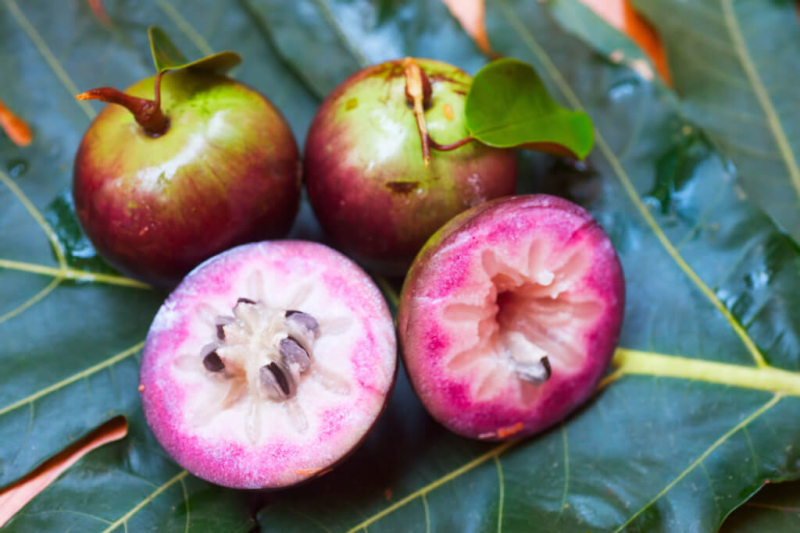
Purple star apple 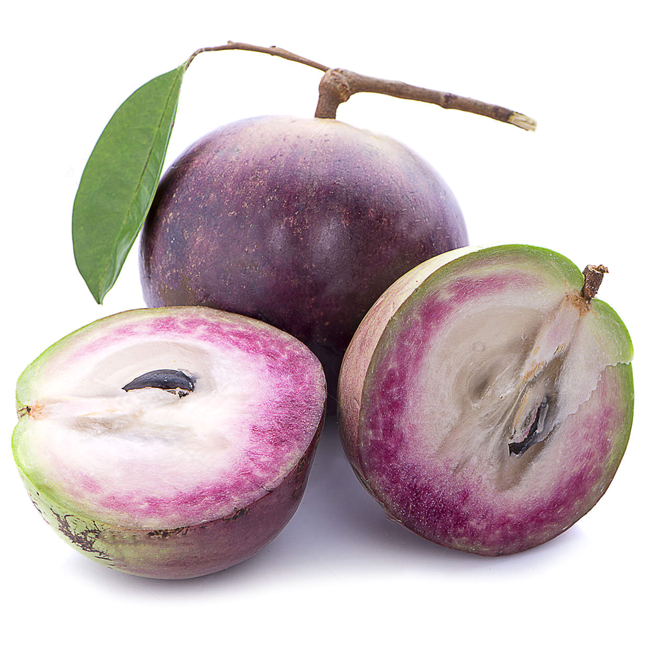
Purple star apple -
Purple cabbage, often known as red cabbage, is a plant in the Brassica genus. Broccoli, Brussels sprouts, and kale are among the nutrient-dense vegetables in this group.
Cabbage is exceptionally healthy in all varieties. Purple cabbage, often known as red cabbage, includes anthocyanins, which increase the cruciferous vegetable's health-promoting properties even further. Despite being low in calories, purple cabbage contains an impressive amount of nutrients. Purple cabbage is high in fiber, vitamin A provitamin, and vitamin C. The large amounts of powerful plant compounds found in its highly colored leaves provide potent anti-inflammatory effects. It's also a versatile vegetable that may be eaten raw, cooked, or fermented and used in a wide range of dishes.
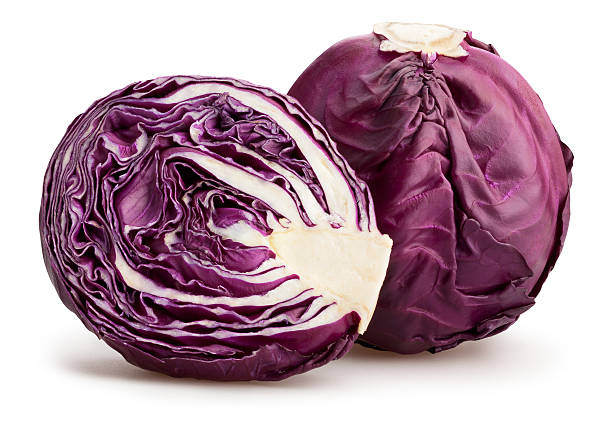
Purple cabbage 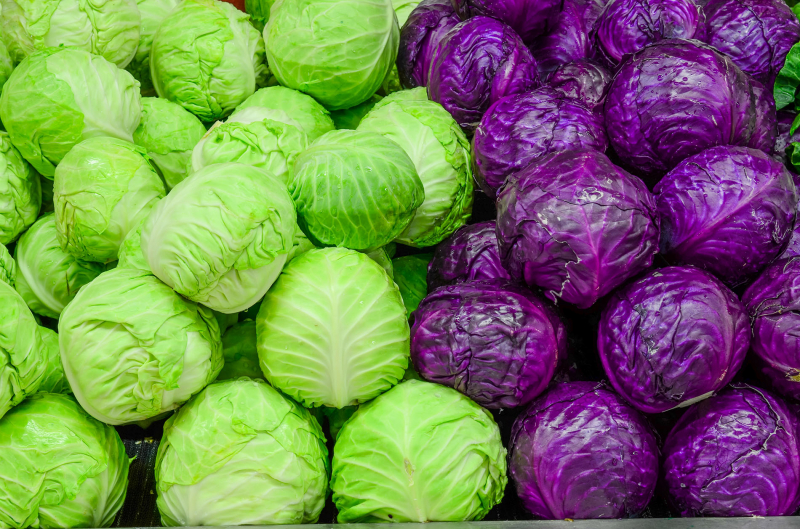
Purple cabbage -
Elderberries are prized for their deep purple color and immune-boosting properties. People use concentrated elderberry products like syrups and capsules to treat colds and the flu naturally.
Elderberry berries and flowers are high in antioxidants and vitamins that may help your immune system. They may help reduce inflammation, reduce stress, and protect your heart. High-dose elderberry supplements have been shown in human studies to improve symptoms and shorten the duration of colds and flu. Elderberries are high in fiber and vitamin C and are often used in jams and jellies, as well as juice, wine, and concentrated syrups. You can take elderberry supplements daily, even three to four times a day. However, you should not take more than the recommended daily dose.
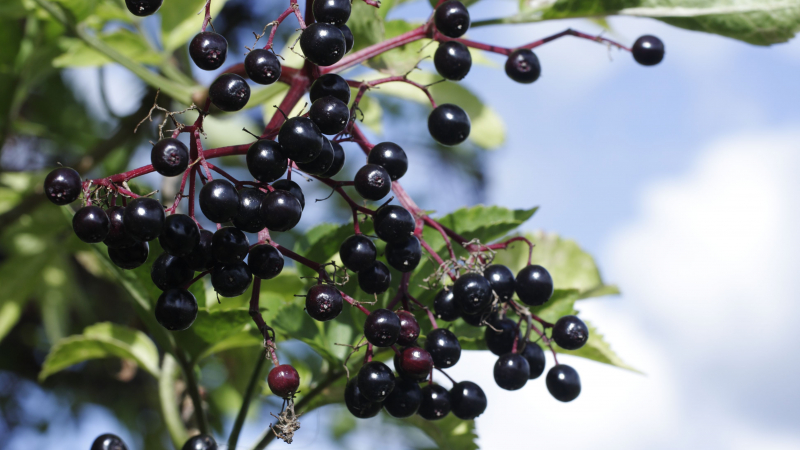
Elderberries 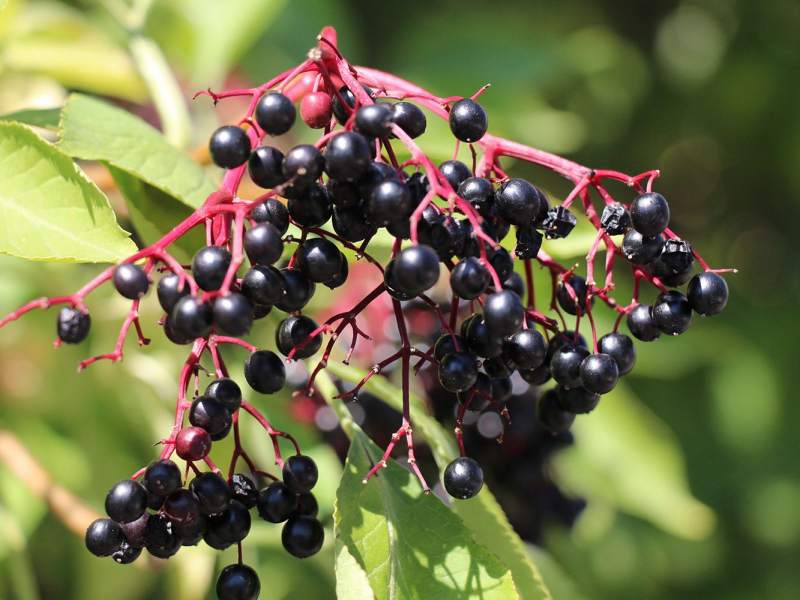
Elderberries
















